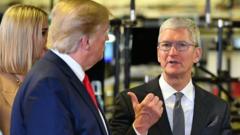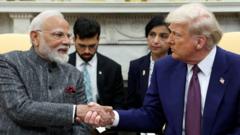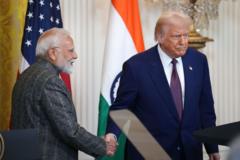This latest truce grants both nations additional time to negotiate critical economic issues, amidst uncertainty for businesses.
**US and China Agree to 90-Day Trade Extension Amid Ongoing Tensions**

**US and China Agree to 90-Day Trade Extension Amid Ongoing Tensions**
The two largest economies aim to avoid escalating tariffs while exploring trade imbalances.
In a significant development, the United States and China have agreed to a 90-day extension of their trade truce, deferring the implementation of increased tariffs that were set to take effect. President Donald Trump signed the executive order on Monday to maintain the suspension until November 10, while China's government also confirmed the extension. This decision allows the US to continue imposing a 30% tariff on Chinese imports, while China retains a 10% tariff on American goods.
Earlier this year, Washington had considered raising tariffs to an alarming 145% on Chinese goods, prompting Beijing to retaliate with 125% duties on products from the US. However, following trade discussions in May in Geneva, both countries managed to negotiate a reduction of these rates. This new extension provides a window for further negotiations aimed at addressing trade imbalances and "unfair trade practices," according to the White House, which highlighted a staggering trade deficit of nearly $300 billion with China for 2024—the largest with any nation.
The two countries will also seek to enhance access for US exporters into the Chinese market and deal with pressing national security and economic issues. In response, a Chinese embassy spokesperson emphasized the importance of cooperation and warned against strategies of suppression or containment.
However, the prolonged uncertainty surrounding tariffs continues to impact US businesses. Beth Benike, owner of Busy Baby, expressed frustration over the lack of clarity regarding future tariffs, stating that the indefinite nature of tariff negotiations hampers business planning and pricing strategies.
Tensions between the nations escalated significantly in April, following Trump's announcement of various tariffs on imported goods, which particularly affected China. Beijing's retaliatory measures led to a trade conflict where tariffs skyrocketed, complicating bilateral commerce. While an agreement reached in May allowed some tariffs to be suspended, the US still imposes a 30% tariff on Chinese goods, whereas American products face a 10% charge in China.
Ongoing discussions between the two nations cover a range of topics including China’s rare earth materials, the country’s oil purchases from Russia, and restrictions on US technology exports to China. In a recent move, Trump eased certain export restrictions, permitting companies like AMD and Nvidia to resume chip sales to Chinese firms under the condition of sharing 15% of their revenues with the US government—an arrangement that has drawn criticism as a form of extortion. Additionally, the US continues its pursuit of a separation of TikTok from its Chinese parent company, ByteDance, a decision that has met with strong opposition from Beijing.
In comments to reporters earlier on Monday, Trump did not explicitly confirm whether the trade truce would be extended but noted that the negotiations had been proceeding "nicely." He also urged China to increase its purchases of US agricultural products, particularly soybeans. Despite the temporary extension, trade activities have already taken a hit; US imports from China plummeted nearly 50% in June compared to the previous year, and American exports to China fell around 20% in the same timeframe.



















